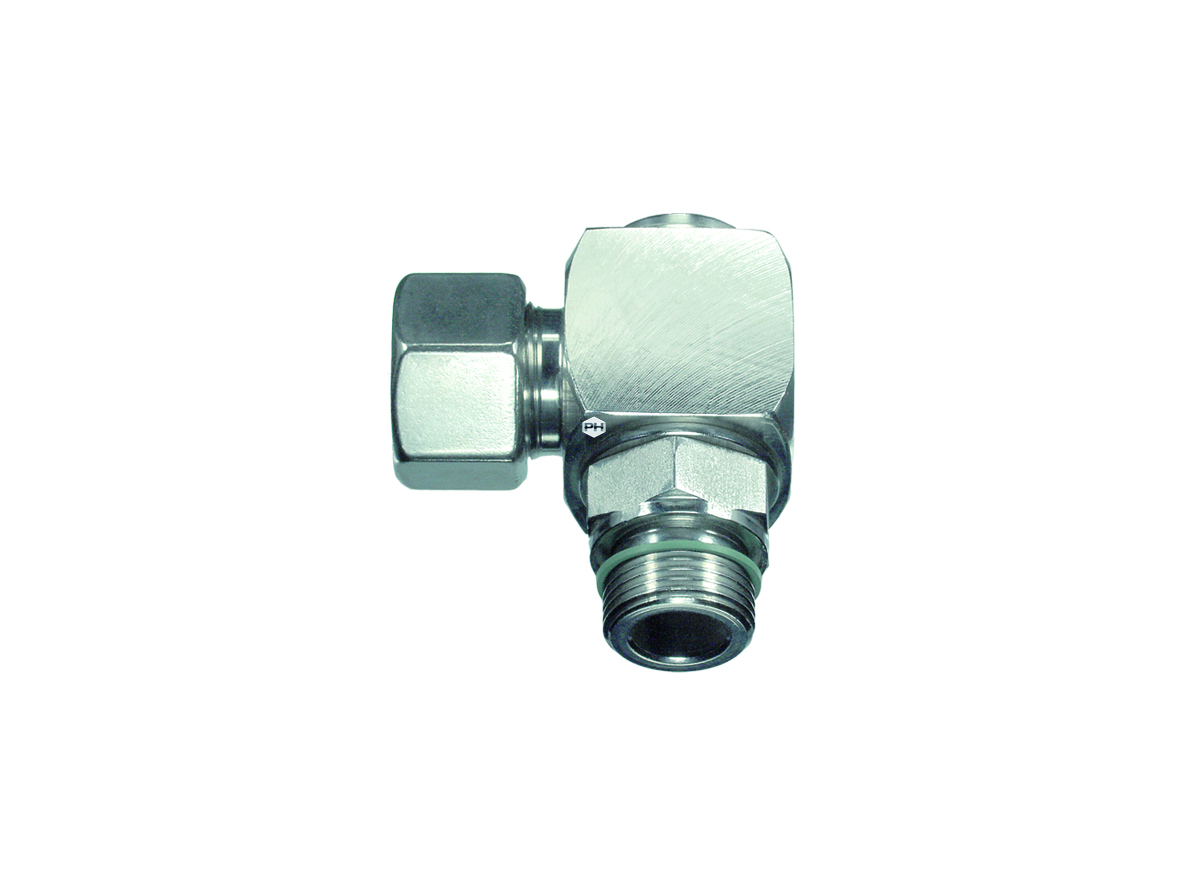Rotary fittings
Rotary fittings are specialised components designed to connect tubes to equipment while allowing for rotation within the sealed connection. These fittings are ideal for applications involving low rotation speeds and require a leak-free connection with minimal maintenance.
Common use cases include hydraulic systems where rotational movement is necessary between components. To ensure proper function, a flexible connection to the compression end is recommended to avoid torque from misaligned tubes.
Key Features
- Material: The main body of the fitting is made from a solid piece of stainless steel.
- Seal Design: Rotary fittings are equipped with both a PTFE internal seal and a Viton captive seal.
- Pressure Capability: Designed for specific pressure ratings as detailed in the catalogue.
- Applications: Specifically designed for use with lubricating media, such as hydraulic fluids.
Advantages
Allows rotation within a sealed connection: Facilitates rotational movement between connected tubes and equipment, preventing twisting and stress.
Low initiation torque: Designed to begin rotation with minimal force, ensuring smooth operation.
Leak-free operation: Maintains a secure seal to prevent fluid loss, crucial for hydraulic system efficiency and safety.
Zero maintenance: Engineered for long-term, maintenance-free operation, reducing downtime and service costs.
FAQ's
Rotary fittings are commonly used to connect tubes to machinery and systems, allowing for rotation within the sealed connection, particularly in hydraulic systems where relative rotational movement is required.
Yes, rotary fittings can be used in high-pressure systems. The specific pressure capabilities are outlined in this catalogue section here and vary from 100 bar to 400 bar depending on the fitting model and size.
Rotary fittings utilise two types of seals: an internal seal made from PTFE (Polytetrafluoroethylene), which is known for its low friction and chemical resistance, and a Viton captive seal, designed to provide a reliable external seal against leaks.
No, rotary fittings are designed for use with lubricating media, such as hydraulic fluids, and are not compatible with pneumatic systems.
Yes, rotary fittings can be retrofitted into an existing system. However, to ensure proper function and avoid introducing torque, a flexible connection to the compression end is recommended.
Download Catalogue
We’ll email you a PDF version of our catalogue featuring 556 pages of updated engineering reference data. If you want a physical copy, click here


